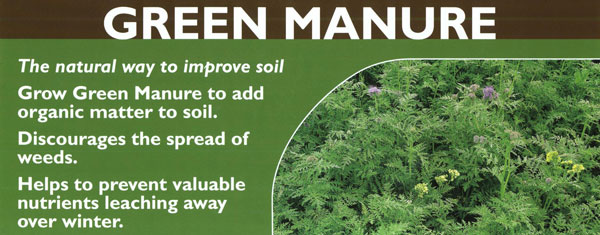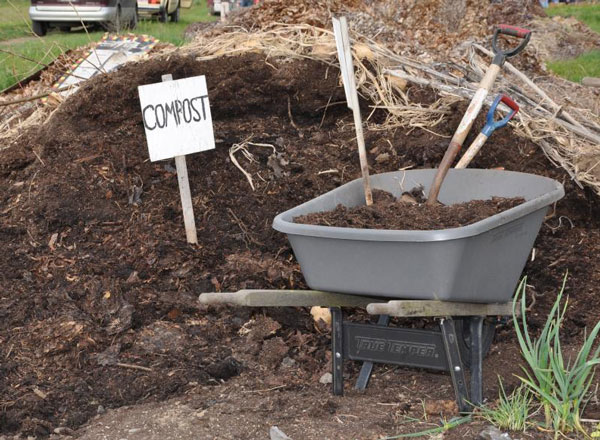- Soil fertility refers to the amount of nutrients in the soil.
- Soil that has more nutrients is called fertile soil.
- Soil that has little nutrients is infertile soil.
- Plants need nutrients to grow.
- The quality of soil is known by how much crops it can successfully yield.
- The yield mainly depends on how much nutrients the soil contains for the plant.
- The nutrients can be found naturally in the soil or can be artificially made by humans.
- The natural nutrients are referred to as manure while the artificial nutrients are known as fertilizers.
There are three types of manure:
When green plants that are rich in nitrogen are cut and immediately buried in the soil they decay and form nutrients in the form of humus for plants, this is referred to as green manure.

This can be made by collecting waste plant materials such as weeds and grass, animal waste and kitchen waste.
These are then made into a heap and then left to decay.
This heap can be watered and a little soil added on to it.
The heap should be turned regularly for it to mix and for it to have an adequate supply of air to allow it to decay.
The decayed heap is called compost.

Animal droppings, urine, and their bedding can be mixed together and added into the soil.
They can also be collected, put together and left to decay forming the farmyard manure.

Standard 7
1. A farmer planted maize during a long rainy season in well-drained soil. After the first weeding, he observed the leaves turning yellowish, although the crops were well spaced and there was enough rainfall. What was the maize lacking?
A. Phosphorus B. Nitrogen C. Sunshine D. Water
2. Which one of the following farm practices DOES NOT help in maintaining soil fertility?
A. Weed control B. Crop rotation
C. Manure application D. Early planting
3. Which one of the following farming activities would lower soil fertility?
A. Leaving the land under the bush
B. Ridging of land before planting
C. Ploughing land across contours
D. Burying cereal stalks in the soil during ploughing
4. A farmer noticed his crop growing slowly and the leaves showing purple coloration. What plant nutrient was lacking in the soil?
A. Nitrogen B. Phosphorus C. Potassium D. Sulphur
5. Why should compost materials be turned three to four times during the preparation of compost manure?
A. To reduce the smell of compost materials
B. To encourage uniform rotting of compost materials
C. To allow fast water penetration in the compost heap
D. To check if the compost heap is ready for use
6. Which one of the following practices would be the most suitable for improving soil fertility on flat farmland?
A. Application of manures B. Controlling soil erosion
C. Application of much C. Draining away excess water
7. A farmer has noticed that every season his maize crop develops the following problems:
(i) The maize plants become shorter than normal
(ii) The lower leaves turn yellowish
What should the farmer do to correct the problems in the future?
A. Plant maize early in the season
B. Plant maize using phosphatic fertilizer.
C. Irrigate the maize crop every morning and evening
D. Apply a nitrogenous fertilizer to the maize early in the season.